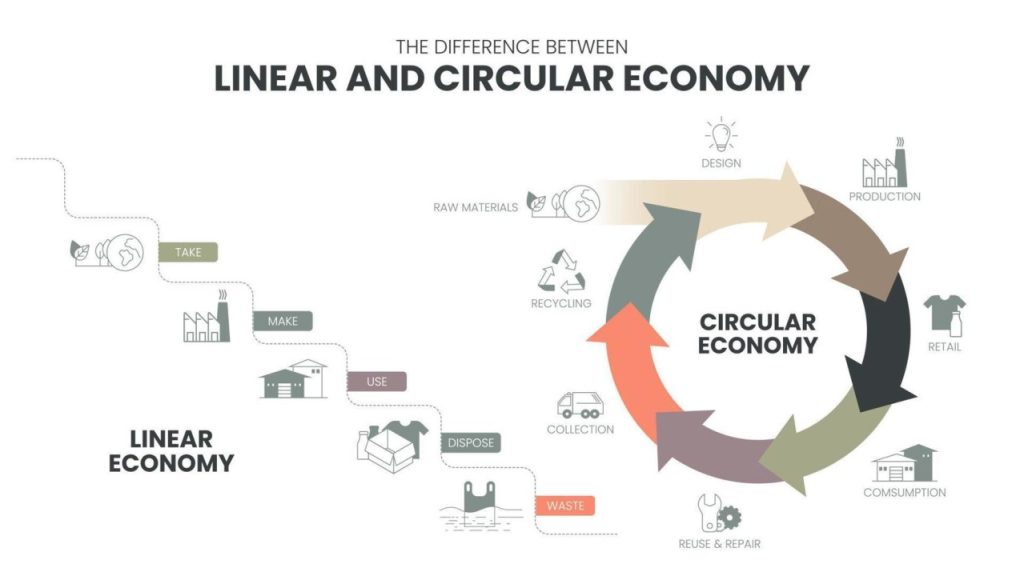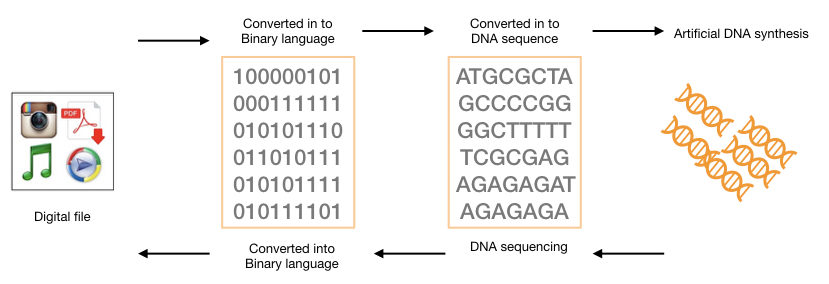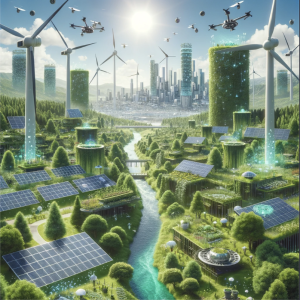
In the relentless march of technological progress, the dirty underbelly of our data-centric world emerges. As our reliance on big data grows, so too does its impact on our environment. Unseen and often overlooked, the colossal energy consumption of data centers poses a dire threat to our planet’s delicate balance. By 2025, these data centers are projected to consume a staggering 200 terawatt-hours (TWh) of electricity, equivalent to approximately 1% of global electricity demand, according to the International Energy Agency (IEA). That’s as much energy as Saudi Arabia produced in 2021. Furthermore, the carbon footprint of the digital sector is estimated to surpass the emissions of the global aviation industry by 2025, as reported by The Shift Project. In this exploration, we unveil the hidden costs and ethical complexities, unraveling the urgent need to address the unsustainable footprint of big data. Join us on a journey to understand the profound implications of our digital choices, as we delve into the challenges, counter-arguments, and innovative solutions that can shape a more sustainable future. It’s time to confront the environmental consequences of our data-driven age and forge a path towards responsible and mindful data practices.
Why should we pay attention to the environmental impacts of big data?
Acknowledging the environmental impacts of big data is crucial in our current landscape. The exponential growth of data centers, driven by the symbiosis of big data and cloud computing, raises concerns about escalating energy consumption and its environmental repercussions, especially in countries at highest risk of poverty and natural disasters. Focusing on computing resources, particularly servers and cooling systems, unveils the critical energy-draining components. Recognizing these impacts is not about dismissing the advantages of big data, but navigating a path toward global sustainable practices. In the pursuit of progress, understanding and mitigating the environmental consequences becomes integral for responsible digital choices and a balanced, sustainable future.
The scientific community recognizes the critical juncture where big data applications, cloud computing, and green computing intersect. The exponential growth of digital information has propelled data centers into an “information contest”, not solely for high performance but increasingly for energy efficiency. Statistics reveal the staggering energy consumption of U.S. data centers, reaching 100 billion kWh in 2011 and contributing to 1.5% of the nation’s total energy consumption. Globally, this translates to 1.1–1.5% of the total worldwide energy consumption in that same year.
As depicted in Fig. 1, the carbon footprint of data centers is projected to surge. The paper asserts that the crux of energy consumption lies in computing resources, particularly servers and cooling systems, demanding a strategic focus to ensure the sustainable development of data centers.

As servers, the backbone of this digital world, escalate their energy consumption, the environmental repercussions intensify. As the voracious appetite for digital information continues to surge, projections indicate an ominous trajectory of increased energy consumption by data centers. The statistics, as illustrated, paint a stark reality – data centers contributing significantly to global energy consumption and carbon emissions. Being mindful of these impacts is not a dismissal of the transformative potential of big data, but a call to conscientiously navigate the delicate balance between technological innovation and environmental sustainability.
Isn’t big data helping the environment?
The advantages of having access to such vast amounts of data are innumerable, with big data applications ranging from improving water conservation efforts, natural disaster response systems, and vertical farming. In one case study, scholars from Stanford University developed a machine learning algorithm which was able to detect farms which were polluting the water supply in North Carolina. Their algorithm was able to detect 15% more farms than manual detection. Being able to collect and utilize data on pressing environmental issues can help to alleviate some of the biggest climate challenges that we are facing today, by allowing more targeted responses in the areas which need them most.
However, at the moment, there are still pressing issues regarding the widespread implementation of such algorithms. For 68% of Sustainable Development Goals (SDGs), specifically those related to the state of the environment, there is not enough data available to accurately assess climate progress. This counter-argument shows that big data is far from being the magic pill which will solve all of our environmental issues, and further work is still necessary.
Do the benefits of big data outweigh the risks?
Should we collect even more data to solve environmental problems? Doing so would allow improved monitoring and analysis in the most at-risk areas, making it easier to take action. However, it may be challenging to put this into practice. To do this successfully, we would need to improve data collection practices in places where this technology is currently lackin. This is often in developing areas, such as some African countries and island nations. This presents additional logistical and personnel challenges, for example dealing with a less than 100% electricity penetration rate. Developing new infrastructure in order to support these demands may put more pressure on an already-at-risk ecosystem, so the risks and benefits must be carefully weighed for each case in order to minimize environmental harm.
This logic can be further applied to sectors outside environmental sustainability. It is undeniable that many algorithms which use big data have produced positive impacts, for example disease detection in healthcare, and cybersecurity analytics. However, the Earth is currently on the verge of not one, but five climate tipping points. Given the imminence of these tipping points, implementing sustainable solutions for big data becomes a race against time. To follow the big data train without solutions for its environmental consequences could be akin to destroying the track in front of us.
How can we make big data more sustainable?
Transition to a circular economy
50 million tons of server, storage and networking equipment from data centers are sent to landfill sites every year. These materials could have quite easily been reconditioned and reused, which would prolong their useful life and reduce the production rate of new equipment. Solving this problem involves transitioning the linear economy of resource production and consumption into the circular economy model.

By being conscious of hardware needs, both individuals and firms can help minimize the amount of electronic waste they create, and promote responsible disposal practices. This is especially important given that many of the resources used to create data centers are finite. Resale of IT equipment can also provide an additional revenue stream for these companies. Finally, the principles of the circular economy should also be applied to the energy used to power data centers, as renewable energy sources play a key role in the cycle.
Data-centric AI? Storing data on DNA?
Researchers from the scientific community are also hard at work determining novel ways to improve the sustainability of big data. Data-centric AI is one of the most promising ideas, based on the principle that there is no decrease in algorithmic performance when using a smaller amount of higher quality data. This ‘small-but-powerful’ approach means that algorithms, such as machine learning models, which rely on big data, spend less time on data pre-processing and save energy in the process. Nevertheless, it is important to note that high-quality data is not necessarily free from bias, so extra care should be taken to ensure that this is minimized.
A more radical idea comes from the field of biotechnology: storing information within the DNA of living cells. DNA is particularly suitable as a storage medium as it is approximately six orders of magnitude denser than the densest media available today. This allows much more data to be stored, allowing big data to remain big, and requires only a fraction of energy and resources to maintain. However, this idea is still in the early stages, so it may be a while before mainstream adoption.

It pays to tax data
One widely used solution to discourage reckless collection and use of a commodity is to charge a tax on it. From income to sugary soft drinks, taxes can also be applied to companies that collect and use large amounts of data, in order to limit both the volume of data collected, as well as how often it is used. This extra financial burden would help limit unnecessary data transfers, which conserves natural resources such as electricity and raw materials.
To reap the highest benefits, the amount of tax paid by a company should depend on the volume of data collected, rather than the monetary value of the data. This would allow tax adjustments to occur at the pace of technological innovation, rather than at the slower pace of legislation. A further benefit of data taxation is that tax revenue can be reinvested into sustainable initiatives, such as renewable energy.
Governments can provide motivation for change
One final way we can minimize the harmful impacts of big data is by promoting responsible data usage through legislation passed by governments. Through stricter legislation, companies will be incentivized to only use data that is absolutely necessary, and increase their transparency about the types and amounts of natural resources used to manage it. This includes not only legislation requiring companies to disclose this information, but legislation which incentivizes companies to choose sustainable practices even when that practice is not the most profitable option.
Furthermore, if international collaboration on legislation can be achieved, a collective effort to use data responsibly can have a much greater positive global impact. This can already be seen through the implementation of the EU’s GDPR, which many countries are using as a basis for their own data protection regulations. However, given the long-existing global differences in norms and values, the task of global collaboration on a project which balances all of these is a much more challenging one.
A unified effort to achieve results
In our exploration, the environmental toll of big data’s relentless growth becomes evident. Despite its benefits, the environmental disadvantages loom large. Big data’s potential to address environmental challenges is constrained by data scarcity and the looming threat of increased carbon emissions.
The claim that big data’s advantages outweigh its environmental impact is challenged. Urgent solutions are needed. Transitioning to a circular economy, embracing data-centric AI, exploring DNA data storage, taxing data usage, and government interventions offer glimpses of a sustainable future.
This journey underscores collective responsibility. Balancing innovation with sustainability is paramount. By aligning technological progress with ethical considerations, we can forge a new narrative—a future where data-driven advancements coexist harmoniously with our planet’s health. The call is clear: a commitment to responsible digital choices for a balanced and sustainable tomorrow.


